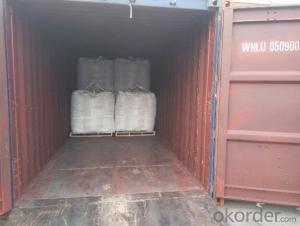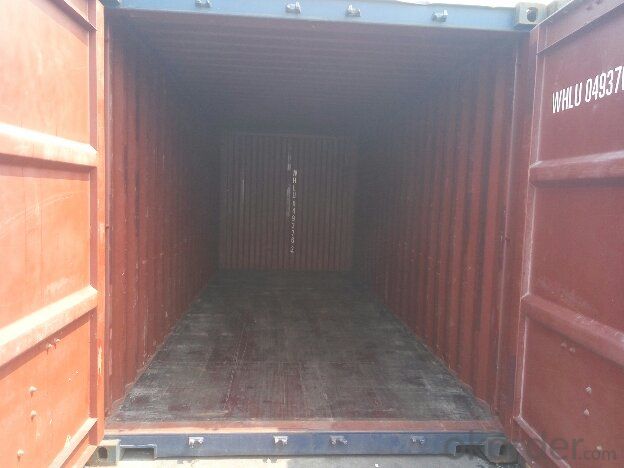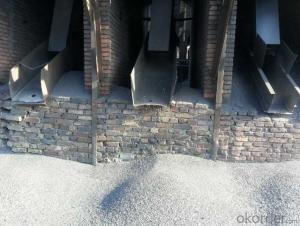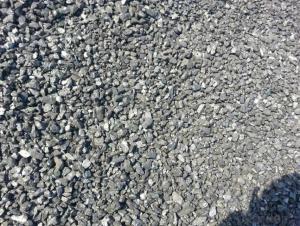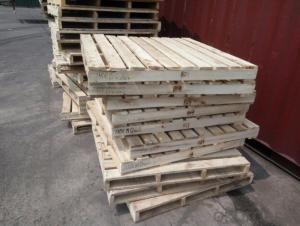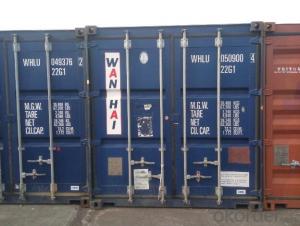Sulphur 0.65%max Ash 12% Foundry Coke in bigger size
- Loading Port:
- Guangzhou
- Payment Terms:
- TT OR LC
- Min Order Qty:
- 21.7
- Supply Capability:
- 1017 m.t./month
OKorder Service Pledge
OKorder Financial Service
You Might Also Like
Brief Introduction
Foundry Coke is the main fuel of melting iron in the oven. It can melt the materials in the over, make the iron reach great heat, and keep good air permeability by sustain stock column. Thus, the foundry coke should have the characteristics of big block, low reactivity, small porocity, enough anti-crush strengh, low ash and low sulphur.
The coke handled by our cooperation is made from superior coking coal of Shanxi province. Provided with the advantages of low ash, low sulphur and high carbon. Our coke is well sold in European, American, Japanese and South-east Asian markets. Our owned Coke plant are located in Shanxi Province and supplying of you many kinds of coke.
we supply Foundry Coke long-term, its characteristic is best strength, low sulfur and phosphorus,thermal stability.
Specifications:
ASH % | 8% max | 10% max | 12% max |
V.M.% MAX | 1.5% max | 1.5% max | 2% max |
SULFUR % | 0.65% max | 0.65% max | 0.7% max |
MOISTURE | 5% max | 5% max | 5% max |
Size | 80mm-120mm,80-150,100-150mm, or as request | ||
Features
1. Our quality is always quite good and stable which is producing and packing according to customers' requirements.
2. Putting Client profile into first, achieved mutual benefit.
3. Good partner on business. It's a good and wise choice for customers' to purchase from us. It's our great honor to cooperate with you. It is more -widely used around the world
4. We can supply documents as follows:
- bill of loading,
-Invoice,
-Packing List
-Insurance
-standard inspection pictures of the container as specified by INSPECTORATE
-or more requested by buyer.
Pictures
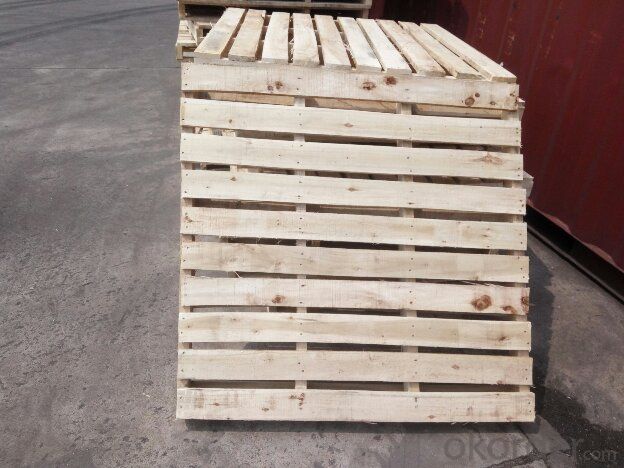

FAQ
1. What is the packing?
In 25kg bag/ In jumbo bags without pallet/ Two jumbo bags with one pallet/ or as customers’ request
2. What is the production capacity?
10 thousand tons per month
3 What is payment term?
Irrevocable LC at sight/ 20% down payment by T/T and 80% against BL copy byT/T/ or to be discussed
4 What is the service?
We will send sample to the third party(CIQ, CCIC, SGS,BV or to be discussed) for checking, and present the test certificate and loading repot of shipment.
- Q: How does carbon affect the growth of plants?
- Carbon is essential for plant growth as it is a key component of carbohydrates, proteins, and other organic compounds that are vital for plant structure and function. Through the process of photosynthesis, plants absorb carbon dioxide from the atmosphere and convert it into glucose, which provides energy for growth and development. Carbon also plays a crucial role in regulating plant water uptake and nutrient absorption. In summary, carbon is indispensable for the growth and overall health of plants.
- Q: What are the different allotropes of carbon?
- There are several different allotropes of carbon, each with its own unique physical and chemical properties. The most well-known allotrope of carbon is diamond, which is known for its hardness and brilliance. Diamond is made up of a three-dimensional arrangement of carbon atoms, each bonded to four neighboring carbon atoms in a tetrahedral structure. Another allotrope of carbon is graphite, which is known for its softness and ability to conduct electricity. In graphite, carbon atoms are arranged in layers that are held together by weak forces, allowing the layers to slide over each other easily. This layered structure gives graphite its lubricating properties. Fullerenes are another class of carbon allotropes, which are made up of carbon atoms arranged in closed cage-like structures. The most well-known fullerene is buckminsterfullerene (C60), which consists of 60 carbon atoms bonded together to form a hollow sphere resembling a soccer ball. Fullerenes have unique properties such as high tensile strength and the ability to act as superconductors. Carbon nanotubes are another allotrope of carbon, which are cylindrical structures made up of rolled-up graphene sheets. Carbon nanotubes can have different structures and properties depending on the arrangement of carbon atoms. They are known for their exceptional strength, electrical conductivity, and thermal conductivity. Amorphous carbon is another carbon allotrope, which does not have a definite crystal structure. It is often found in substances like soot, coal, and charcoal. Amorphous carbon can have a wide range of properties depending on its structure, ranging from soft and powdery to hard and brittle. These are just a few examples of the different allotropes of carbon. The ability of carbon to form various allotropes with vastly different properties contributes to its importance in a wide range of applications, including jewelry, electronics, and material science.
- Q: How to identify a laptop shell is carbon fiber
- Carbon fiber, as its name suggests, is made from carbon fiber, so there are several characteristics. First, if it is not colored, you can see the obvious fiber. Second is black carbon color. And it's a lot more than ABS.
- Q: What are the consequences of increased carbon emissions on forest ecosystems?
- Increased carbon emissions have significant consequences on forest ecosystems. One of the most notable impacts is the alteration of the climate and weather patterns. The excessive carbon dioxide in the atmosphere traps heat, leading to global warming. This rise in temperature can disrupt the delicate balance of forest ecosystems. Warmer temperatures can cause shifts in the distribution and composition of tree species, as some may struggle to adapt to the changing conditions. Another consequence of increased carbon emissions is the acidification of rainwater. When carbon dioxide combines with water vapor, it forms carbonic acid, which can fall as acid rain. Acid rain has detrimental effects on forest ecosystems, as it leaches important nutrients from the soil and damages tree leaves and other vegetation. This can weaken the overall health of the forest and make them more susceptible to diseases and pests. Furthermore, increased carbon emissions contribute to the intensification of wildfires. Higher temperatures and drier conditions provide the perfect environment for fires to spread and become more frequent. Forests that have evolved to withstand natural fire regimes may struggle to cope with the increased intensity and frequency of these fires. This can lead to the loss of biodiversity, destruction of habitat, and long-term degradation of forest ecosystems. Lastly, increased carbon emissions contribute to the phenomenon known as ocean acidification, where excess carbon dioxide is absorbed by the oceans. This acidification can affect the health of coastal and marine ecosystems, which are intricately connected to forest ecosystems. Many forest ecosystems, such as mangroves and salt marshes, provide vital nursery habitats for marine species. If these forest ecosystems decline due to carbon emissions, it can have cascading effects on the health and productivity of coastal and marine ecosystems. Overall, increased carbon emissions have far-reaching consequences on forest ecosystems. It alters climate patterns, causes acid rain, intensifies wildfires, and affects coastal and marine ecosystems. These impacts not only harm the trees and vegetation within the forests but also disrupt the delicate balance of the entire ecosystem, leading to loss of biodiversity and long-term degradation. It is crucial to mitigate carbon emissions and promote sustainable practices to minimize these consequences and preserve the health and integrity of forest ecosystems.
- Q: How does carbon affect the formation of desertification?
- The formation of desertification is not directly affected by carbon. Rather, desertification is primarily caused by a combination of natural factors, such as climate change, prolonged drought, and human activities like deforestation and overgrazing. However, carbon does play an indirect role in exacerbating desertification through climate change. Carbon dioxide (CO2), a greenhouse gas, is released into the atmosphere through human activities, particularly the burning of fossil fuels. The increased concentration of CO2 in the atmosphere leads to global warming, which alters climate patterns and increases the frequency and intensity of droughts. Prolonged droughts deplete soil moisture, making the land more susceptible to erosion and degradation, thus contributing to the desertification process. Furthermore, carbon indirectly affects desertification through deforestation. Trees and other vegetation play a vital role in maintaining healthy soil by preventing erosion, retaining moisture, and providing shade. When forests are cleared, the carbon stored in trees is released into the atmosphere, contributing to higher CO2 levels. Additionally, the loss of vegetation cover exposes the soil to erosion by wind and water, which accelerates desertification. It is important to acknowledge that while carbon indirectly impacts desertification through climate change and deforestation, desertification itself is a complex process influenced by various factors. Addressing desertification requires a comprehensive approach involving sustainable land management practices, reforestation efforts, water management, and strategies to mitigate climate change.
- Q: How accurate is carbon dating?
- Carbon dating, also known as radiocarbon dating, is a widely used scientific method to determine the age of organic materials up to 50,000 years old. It is based on the principle of measuring the ratio of radioactive carbon-14 (C-14) to stable carbon-12 (C-12) in a sample. Carbon dating has proven to be a highly accurate method, with a relatively small margin of error. The accuracy of carbon dating depends on several factors, including the quality and preservation of the sample, the precision of the measurement instruments, and the understanding of the carbon cycle in the past. One of the main limitations of carbon dating is that it can only be used on organic materials that were once alive. This means that it is not applicable for dating inorganic materials such as rocks or minerals. Additionally, carbon dating is most effective for samples younger than 50,000 years old, as the amount of C-14 decreases over time, making it more challenging to measure accurately. To ensure accuracy, scientists often use multiple dating methods or cross-reference their results with other independent dating techniques. This helps to verify the reliability of carbon dating and provide a more comprehensive understanding of the age of the sample. In recent years, advancements in technology and calibration methods have further improved the accuracy of carbon dating. For instance, the use of Accelerator Mass Spectrometry (AMS) allows for smaller sample sizes and greater precision in measurements, reducing the margin of error. Calibration curves based on tree rings, known as dendrochronology, also help refine the accuracy of carbon dating. While carbon dating is a highly reliable method, it is important to acknowledge that no dating technique is perfect. There are inherent limitations and uncertainties associated with all scientific dating methods. However, with proper calibration and careful analysis, carbon dating remains one of the most accurate ways to determine the age of organic materials.
- Q: How does carbon affect the formation of volcanic eruptions?
- The formation of volcanic eruptions can be significantly influenced by carbon. One way in which carbon impacts volcanic eruptions is through the degassing process. When magma rises to the surface, it carries dissolved gases, including carbon dioxide. As the magma moves towards the surface and the pressure decreases, the dissolved gases begin to separate, forming gas bubbles within the magma. These gas bubbles can make the magma more buoyant, facilitating its ascent and eventually leading to an eruption. In addition, carbon can also affect the viscosity of magma, which measures its resistance to flow. Magma with higher carbon content tends to have lower viscosity, making it more fluid-like and capable of flowing more easily. This reduced viscosity enables the magma to move more swiftly towards the surface, increasing the chances of an eruption. Moreover, carbon can contribute to the explosiveness of volcanic eruptions. When magma reaches the surface, it can come into contact with organic matter, such as plant material or fossil fuels, which contain abundant carbon. This interaction can result in the combustion of the organic matter, releasing additional gases like methane. These gases can further elevate the pressure within the volcano, leading to more explosive eruptions. In summary, carbon plays a crucial role in the formation of volcanic eruptions. It influences the buoyancy and viscosity of magma and can contribute to the explosiveness of eruptions. Understanding the impact of carbon in volcanic processes is vital for predicting and mitigating the risks associated with volcanic activity.
- Q: How does carbon dioxide affect the growth of marine organisms?
- Marine organisms are impacted by carbon dioxide in various ways. To begin with, the ocean's pH can be lowered by increased levels of carbon dioxide, causing ocean acidification. This change in acidity can harm the growth and development of marine organisms, particularly those with calcium carbonate shells or skeletons, such as corals, mollusks, and certain plankton species. Organisms like these may struggle to construct and maintain their structures due to high carbon dioxide levels, rendering them more susceptible to predation and hindering their overall growth and survival. Moreover, the physiology and metabolism of marine organisms can also be affected by elevated carbon dioxide levels. Research suggests that excessive carbon dioxide can disrupt the functioning of enzymes that are responsible for various biological processes, including growth and reproduction. This disruption can result in reduced growth rates, impaired reproductive success, and an overall decline in the fitness of marine organisms. Furthermore, increased carbon dioxide levels can indirectly impact marine organisms by modifying the availability and distribution of other vital nutrients and resources. For instance, heightened carbon dioxide can alter the solubility of minerals and trace elements, impacting their bioavailability to marine organisms. This disruption can disturb nutrient cycling and limit the availability of essential nutrients necessary for growth and development. In summary, the rise in carbon dioxide levels caused by human activities can have significant adverse effects on the growth and development of marine organisms. These effects can disrupt entire marine ecosystems, potentially leading to severe consequences for biodiversity and the functioning of these ecosystems.
- Q: What's the difference between carbon steel pipes and stainless steel pipes and seamless steel tubes?
- Carbon steel pipe and stainless steel pipe with the material classification, and the seamless steel tube is shaped by divided categories.
- Q: What are the consequences of increased carbon emissions on global trade?
- Increased carbon emissions have significant consequences on global trade. The main consequence is the exacerbation of climate change, leading to extreme weather events, rising sea levels, and shifts in agricultural patterns. These changes can disrupt supply chains, increase transportation costs, and damage infrastructures, negatively impacting international trade. Additionally, countries may introduce stricter environmental regulations, tariffs, or trade barriers to address climate concerns, further hindering global trade. Overall, increased carbon emissions pose a threat to the stability and efficiency of global trade.
Send your message to us
Sulphur 0.65%max Ash 12% Foundry Coke in bigger size
- Loading Port:
- Guangzhou
- Payment Terms:
- TT OR LC
- Min Order Qty:
- 21.7
- Supply Capability:
- 1017 m.t./month
OKorder Service Pledge
OKorder Financial Service
Similar products
Hot products
Hot Searches
